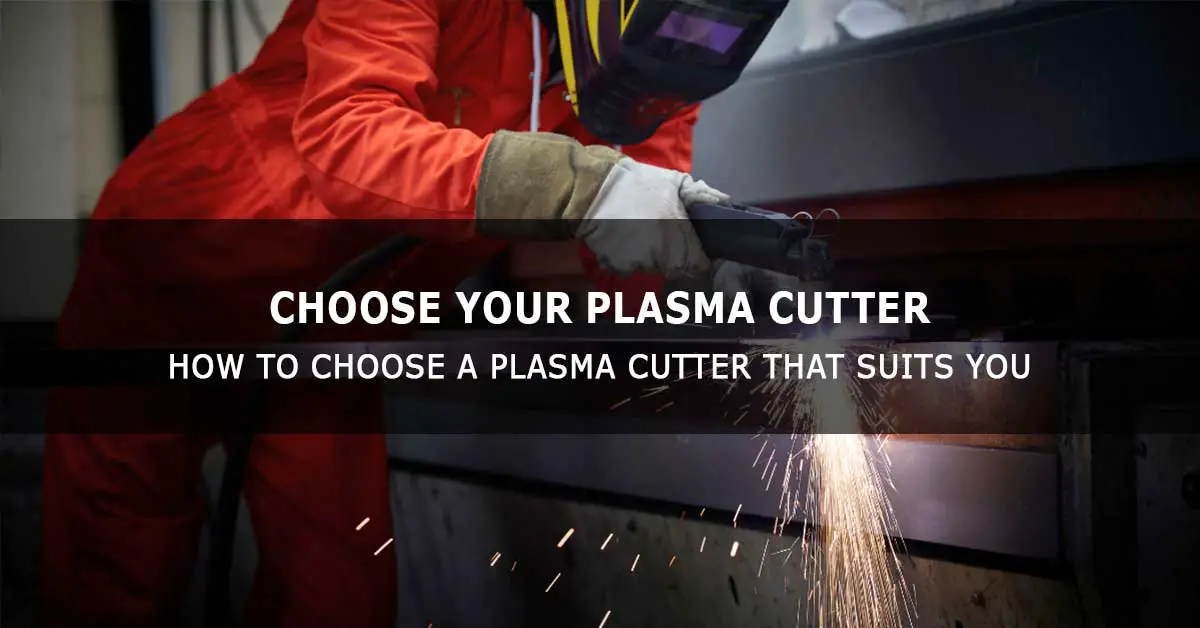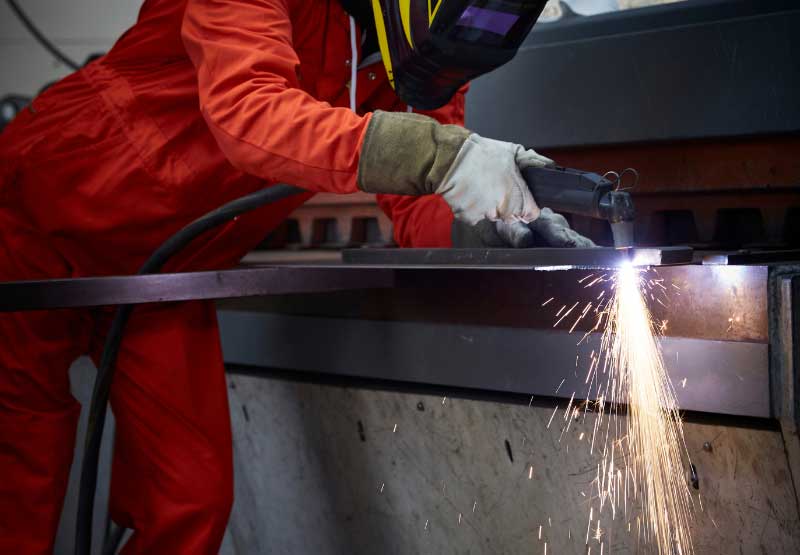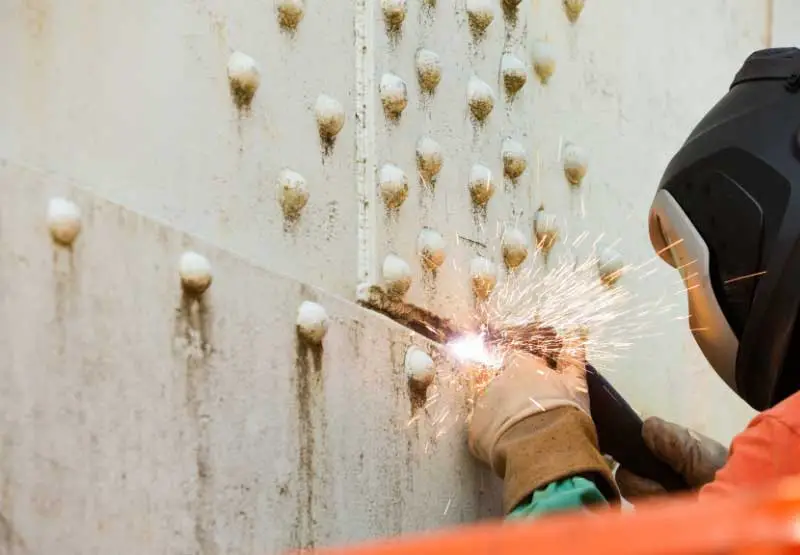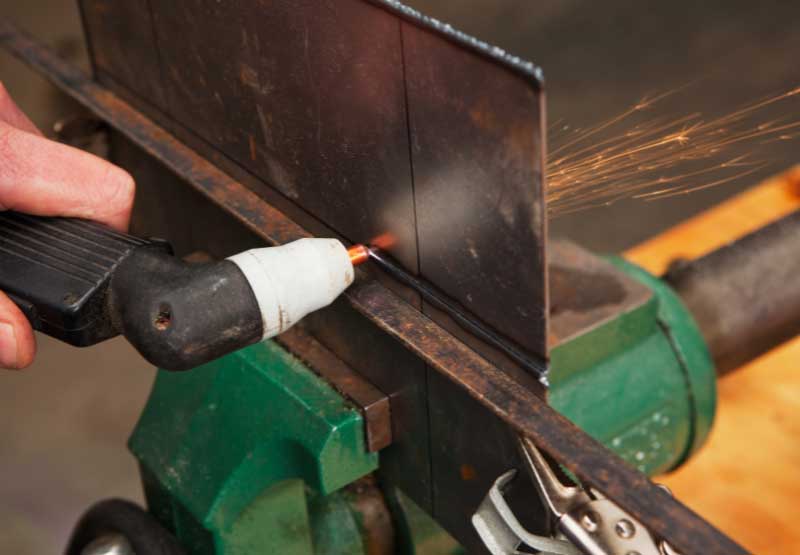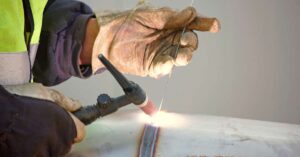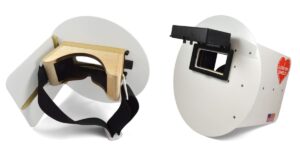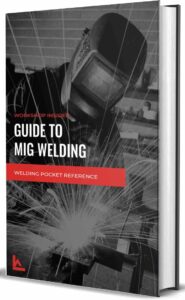Are you in the market for a new plasma cutter? A good quality cutter is essential for cutting and shaping different materials accurately and quickly. But, with all the available options, how do you decide which best fits your needs?
This comprehensive guide will help you choose the best plasma cutter that suits your project requirements. We will take an in-depth look at some decisive factors to ensure you have all the information on hand when making an informed purchase decision.
Factors to Consider When Choosing a Plasma Cutter
There are several factors to consider when purchasing a plasma cutter; here are 17 points to consider when selecting your plasma cutter:
1. Material Thickness
When choosing a plasma cutter, remember the metal thickness and the maximum thickness of the metal you wish to cut. The size of a plasma cutter, like the size of a welding power source, is proportional to the amperage and voltage it can create.
Plasma cutting needs relatively high voltage and low amperage, which is not similar to welding. People often make incorrect assumptions about plasma machines based only on their amperage.
Remember that total output power (in watts) is just the product of current and voltage. Some arithmetic will be required for more accurate product comparison. Plasma cutting capabilities for a particular machine size vary significantly across manufacturers.
2. Cutting Speed
When determining production rates, which are often stated in parts per hour, it is essential to know how quickly the metal can be cut relative to its thickness. Therefore, the cutting procedure is less likely to become a bottleneck and slow the operation.
Typically, manufacturers of plasma cutting equipment supply a variety of charts that make it simple to compare the cutting speeds of various models.
3. Air Compressor
Plasma cutters need either an internal air compressor or an external supply of compressed air to create plasma. Both plasma cutters provide good results; their decision is a matter of personal taste. A built-in air compressor will raise your expenses but expedite the completion of lesser tasks.
4. Plasma Cutter Durability
Select a plasma cutter with a solid reputation for quality and longevity. Because plasma cutters are an expensive investment, you need to ensure that the one you own will last and won’t break down in the middle of an important project. Choose a trustworthy brand-name plasma cutter that a reliable retailer carries.
Read our Article: Best Plasma Cutters on the Market in 2023 – Reviews and Buying Guide
5. Consumables and Accessories for the Plasma Cutter
A plasma cutter may be configured to fit the demands of a broad range of jobs and users by using several consumables and torch accessories. Choose between a regular and an extended cutting tip, depending on the depth of your cuts.
A drag shield integrated into the device protects the standard tip when using a unit with a current of more than 40 amps output power. This guard also maintains a space of 1/8 inch (3.2 mm) between the tip and the workpiece’s surface (with units less than 40 amps, the end can be placed directly on the workpiece).
Bracing the drag shield’s edge on a guide is a common way to guarantee a straight cut that many users like (such as a ruler, piece of wood, cardboard template, etc.).
6. Pilot Arc
A pilot arc is a cutting feature that gives a more steady arc with longer consumable life since you can cut metal without the tip of the torch contacting the metal.
This feature is beneficial if you cut rusted services since you do not have to clean and hit the metal. Though this is a recent development, it is standard for all the most basic plasma cutters.
7. Machine Voltage
There are three distinct voltage settings that plasma cutters may be bought with. Choose from 115V, 230V, or a dual voltage cutter that works with both. Plasma cutters with 115V are helpful for novices that do not require much power and are cutting at home.
You may use them with a regular home socket, but you should not expect much power from them. A generator is required as a power source if it requires a 230V input. If you have a device that can use either plug, you may quickly swap between them based on your needs and the surrounding conditions.
8. Plasma Cutter Rated Cut
A plasma cutter can slice through any conductive metal like steel, aluminum, or stainless; the maximum conductive metal thickness a plasma cutter can handle is crucial. Consider the thickest metal you could be cutting and choose a machine accordingly.
It is essential to think about the following three cut scores:
- The maximum rate of 15 inches per minute (IPM) at which a certain metal thickness may be cut.
- The metal of higher quality may be cut at a slower pace, increasing its thickness.
- A sever cut is the maximum thickness which the plasma cutter can handle.
9. Extended tips
With a more extended tip, you can bevel, cut corners, and see the cutting arc better. Therefore, some users like it. The end of this tool sticks out about half an inch to an inch from the cup that holds it.
This gives the person using it more control over where the plasma jet goes and lets them get to hard-to-reach places. After three or four touches, the tip hole gets more prominent, which makes it hard to draw a tight arc without shaking your hands.
10. Roller Guides and Circle-Cutting Guides
Instruments such as roller and circular cutting guides may aid you in producing clean cuts every time, even if you do not have a steady hand. Since these guides hold the torch in place and prevent the tip from coming into contact with the workpiece, you can quickly move in a straight line or cut a perfect circle with their assistance.
11. Gouging Tips
You may remove the old, poor-quality welds using a gouge point. A gouge tip’s hole diameter is three to four times that of a standard tip. The cone form pushes the plasma arc outward, removing significantly more material than a standard tip’s tiny aperture.
Contrary to common opinion, plasma is unsuitable for gouging, albeit due to previous machines’ weaker arcs. Modern plasma torches have a more robust structure and produce 1 to 1 1/2 inches long arcs.
Although carbon arc gouging is more better at removing metal, plasma arc gouging is superior since it is quieter, creates less smoke, and allows greater control over the arc.
12. Plasma Cutter Duty Cycle
A plasma cutter’s duty cycle is its maximum recommended hourly workload. Plasma cutters with a higher duty cycle can be used for a longer period, and the duty cycle of any given machine will decrease as you increase the voltage.
A longer duty cycle will be ideal for making long cuts or deep cuts on large pieces of metal, while a shorter duty cycle is ideal for a home shop where a series of tiny cuts are made regularly. You want the largest percentage value possible for your current to have the optimum duty cycle.
13. Machine Weight
The lightest plasma cutters weigh around 20 pounds, whereas commercial machines may weigh up to 100 pounds. Investing in a lightweight, back-friendly plasma cutter transport solution will benefit you.
However, remember that smaller, lighter machines are less effective at cutting through thick metal than bigger, heavy-duty plasma cutters.
14. Cut Quality
The cut quality is how clean and smooth the resulting cut is. The finest plasma cutters offer excellent cut quality, so cuts will seem crisp and clean and will not need you to clean them up for a smooth appearance.
15. Cutting Torch Specifications
The length of the torch should be addressed. If you have a large workshop and employ heavy equipment, invest in a longer torch cable to move the plasma cutter more freely around your workspace.
If you want to cut for long periods, it may be more necessary to utilize torches that conform to the curve of your hand.
16. Plasma Cutter Operating Cost
Plasma cutters’ consumables and machine types may significantly impact their consumption rates. To save money in the long run, consider the equipment’s consumption rate.
Although some plasma cutters are more costly upfront, they offer a reduced running cost and high-quality consumables, potentially saving you money in the long term.
17. Plasma Cutter Output Power
The metal-cutting capabilities of your plasma cutter are directly related to its output power. For example, most 1/8″ thick metals can be cut with 12 amps of output power from a 120v machine, but metals up to 3/4″ wide may be cut with 60 amps of output power from a 230v machine.
In addition to standard plasma cutters, inverter-based variants provide higher cutting output power at a decreased weight.
Techniques of Plasma Cutting
- After selecting a plasma cutter and completing the procedures on the pre-cut checklist, plasma cutting may commence.
- Initially, set the drag shield so it rests on the cutting edge of the base metal or maintains the appropriate standoff distance (often 1/8 inch) and aims the arc downward.
- The second step is to elevate the trigger lock and pull the trigger; this begins a pilot arc immediately.
- Then, pass the flame over the metal while the cutting arc forms.
- Fourth, adjust the cutting speed so that sparks escape through the base metal from the bottom of the cut.
- As you reach the end of your cut, tilt the torch toward the last edge or hold the trigger for a time before releasing it to achieve a clean split in the metal.
- Post-flow air cools the torch for 20 to 30 seconds after releasing the trigger. If the trigger is pulled after the flow has stopped, the arc will continue instantly.
Advantages of Plasma Cutting
Single Cut
There is usually just one cut required. Many professionals in the fabrication, construction, maintenance, artistic, and do-it-yourself communities have found that using a portable air plasma arc-cutting machine has replaced their need for traditional mechanical cutting equipment, including saws, cut-off wheels, shears, and snips.
Increase Output
Plasma cutting could increase output and cut costs at the same time. Plasma cutting has several benefits, such as ease of use and less time spent on cutting.
Preheating Required
Plasma cutting does not require preheating of the workpiece; it is more efficient since plasma does not need the metal to be heated before cutting.
Cutting Precision
Produces a small kerf and area where heat is affected (cut width). With plasma equipment, it is possible to gouge, pierce, bevel, cut holes, and trace.
Conclusion
It is essential to test out a plasma cutter before buying it. At the very least, ensuring the store has a reliable return policy is necessary if the plasma-cutting equipment does not meet expectations.
If the new plasma cutting machine you bought has a strong warranty, you can buy it confidently, knowing it will be a good investment in the long run.
References:

